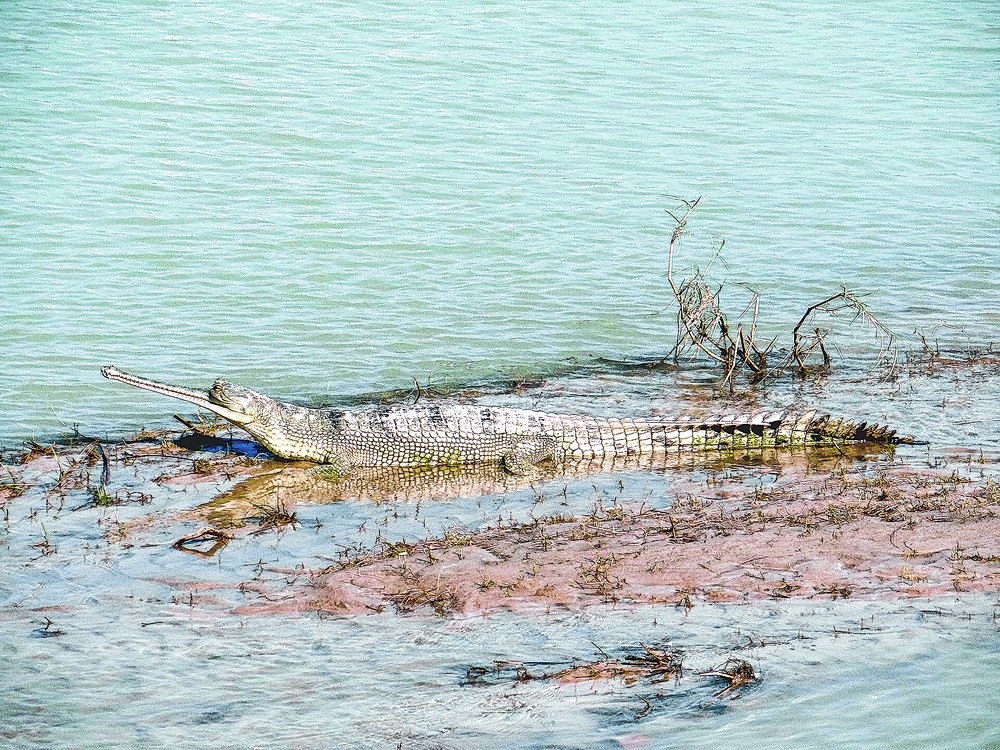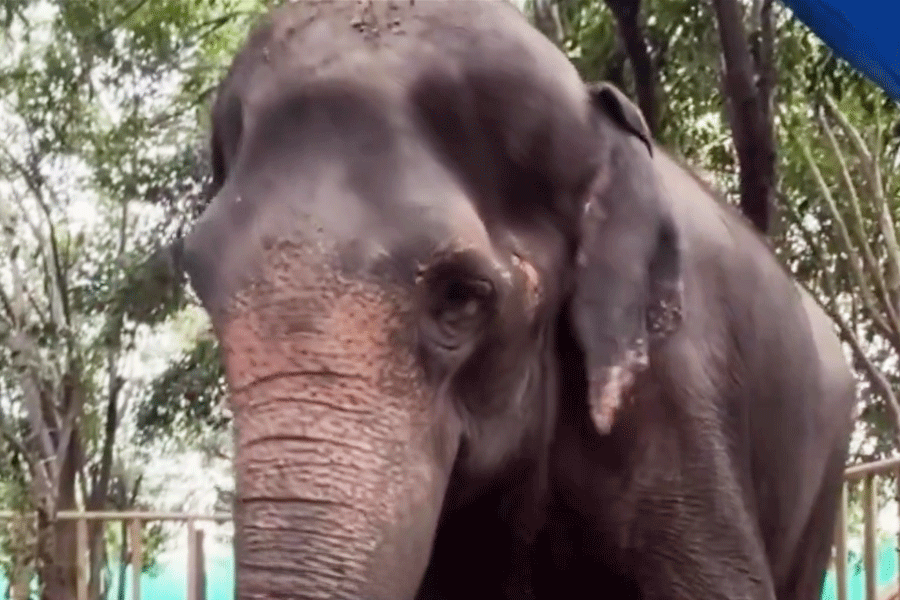
In nature, every species needs protection against anthropogenic threats. But, when it comes to priority, critically endangered species have an edge over others, because they are the closest from extinction.
Gharial Gavialis gangeticus, a critically endangered species, also demands conservation attention because of drastic decline in their number in the wild over the years. The IUCN Red List of Threatened Species mentions presence of less than 200 adult gharials in the wild when assessed in 2006. Less number of adults means less reproductive individuals, adversely affecting the recruitment rates.
People are less familiar with gharials, and often refer to them as "alligators" or think it to be harmful for human beings - which is not true. However, governments and conservationists are making all out efforts to save this long and narrow snouted, odd-looking and fish-eating member of order Crocodilia - the predatory and semi-aquatic reptiles. Adult male gharials possess a pitcher like appendage on the tip of their snout, the basis of its nomenclature.
Fast flowing and less polluted river Gandak in Bihar is a natural habitat of gharials. Presence of a remnant gharial population in the river demanded population strengthening through restocking. A Gharial Restocking Project in the Gandak River by the environment and forests department, Bihar, and Wildlife Trust of India (WTI), aims at connecting the ex-situ conservation efforts with that of in-situ conservation of the species by releasing the captive bred gharials, whose breeding was started in Sanjay Gandhi Biological Park, in early 2000 with a vision to send them ultimately back into the wild at a suitable age.
In the initiative, 30 sub-adult gharials have been released in the river during 2014-15. Besides survivability of the released gharials, post-release monitoring using satellite tracking, radio-telemetry and field based techniques, has reflected that some of the released individuals are moving to much farther distance while a majority prefer to remain in the vicinity of the place of release, which is near the Gandak barrage at Valmikinagar.
A satellite-tagged gharial moved to river Ganga and finally reached river Sone after travelling approximately 430km, while another was sighted 186km downstream the release site. Marking on the released gharials by cutting tail scutes help in identification of the released animals.
Field researchers of WTI had an interesting observation two weeks ago. "We noticed a released gharial (ID no. 21) regularly basking on a sandy island upstream barrage. The animals was photographed on May 3, 2015," narrates Subrat Kumar Behera, field officer, WTI. It was an utter surprise to see the gharials crossing the barrage having 36 sluice gates, he added. The gharial was released approximately 2km downstream of the Gandak barrage on February 10 this year.
Nepal-released gharials have been seen moving with the river flow downstream the barrage but it is for the first time that a gharial moved upstream the barrage and crossed the physical barrier across.
Possibly, the animal crossed the barrage when the gates were opened to discharge water which creates many small mid-channel sandy islands in the upstream. Such islands are preferred basking sites for gharials. As soon as these islands got submerged due to closure of gates, the animal moved downstream of the barrage. It is a common notion that barrages act as physical barrier causing isolation of upstream and downstream population of aquatic species.
With strong evidences of gharials' movement across the barrage at the India-Nepal border, it seems logical and important to conduct a trans-boundary monitoring of the species involving researchers of both the countries in the entire stretch of the Gandak river, including the portion within Nepal, where it is called Narayani.
A survey completed in March this year in the Gandak between Valmikinagar and Sonepur near Patna, a minimum of 54 gharials were sighted, of which 35 were wild - neither released by Nepal nor India. Of the 30 gharials released by WTI and the Bihar forest department, 15 have been directly sighted in the river during monitoring. The habitat of Gandak river needs to be preserved as a promising space for gharials, which will also help in thriving a healthy population of other endangered fauna like Gangetic dolphins and turtles.
Once common in the Ganga, Yamuna, Sone, Chambal, Ghaghra, Gandak, Mahanadi and Brahmaputra rivers in India, the gharial is now restricted to parts of stretches in some of these rivers.
Samir Kumar Sinha, the regional head of Wildlife Trust of India, is implementing conservation activities of the organisation in Bihar since 2003. He co-ordinates implementation of the project on Gharial Restocking in the river Gandak. He is also the member of State Board for Wildlife, Bihar











